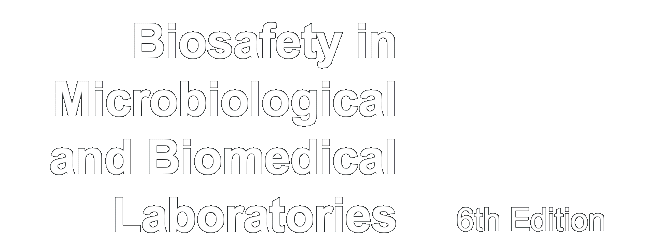Summary of Changes to the Biosafety in Microbiological and Biomedical Laboratories 6th Edition (BMBL-6)
This Summary of Changes was prepared by the ABSA International Technical and Regulatory Review Committee (TRR). May 2021
This Summary of Changes is not to be used as a substitute for the CDC/NIH BMBL-6 edition.
Table of Contents
II: Biological Risk Assessment
IV: Laboratory Biosafety Criteria
Biosafety Level 1 (BSL-1)
Biosafety Level 2 (BSL-2)
Biosafety Level 3 (BSL-3)
Biosafety Level 4 (BSL-4)
V: Vertebrate Animal Biosafety Level Criteria for Vivarium Research Facilities
Animal Biosafety Level 1
Animal Biosafety Level 2
Animal Biosafety Level 3
Animal Biosafety Level 4
VI: Principles of Laboratory Biosecurity
VII: Occupational Health Support for Biomedical Research
Appendix B: Decontamination and Disinfection of Laboratory Surfaces and Items
Appendix C: Transportation of Infectious Substances
Appendix E: Arthropod Containment Guidelines
Appendix F: Select Agents and Toxins
Appendix G: Integrated Pest Management
Appendix H: Working with Human, NHP, and Other Mammalian Cells and Tissues
Appendix I: Guidelines for Work with Toxins of Biological Origin
Appendix J: NIH Oversight of Research Involving Recombinant Biosafety Issues
Appendix K: Inactivation and Verification
Section VIII-F: Viral Agents Arboviruses and Related Zoonotic Viruses (pages 292-330)
Several modifications to this section were made. Table 3 lists Arboviruses and Hemorrhagic Fever Viruses by family and genus, recommended biosafety level and the antigenic group (page 308). Note that the HEPA filtration on lab exhaust information has been removed from this table. Table 4 is an arthropod-only table including family, genus, recommended biosafety level and isolate (page 327). Table 5 lists which viruses are handled at BSL-3 with HEPA filtration on lab exhaust (page 329).
Importantly, West Nile and St. Louis Encephalitis viruses are now recommended to be handled in BSL-2 facilities, containment equipment, and practices. However, a risk assessment is needed if working with extremely high titer of virus or aerosol-generating procedures. The Central European Tick-Borne Encephalitis Virus (TBEV-CE) has been reclassified to require BSL3 containment, provided that at-risk personnel are immunized.
Section VIII-G: Toxin Agents (pages 334-347)
The information provided on Toxin Agents has been updated and revised. Overall, more detailed and updated information is now provided on the various toxic agents included.
The information on Botulinum neurotoxin (BoNT) includes more background information and more details on symptoms and diagnostics. More specific information is included on laboratory containment and PPE recommendations. More information on the stability of the bacteria and toxin is included. A statement on recombinant materials has been added. Updated vaccination and post-exposure treatment information included.
The information on Staphylococcal enterotoxins (SEs) has been updated to include more background information on the toxins, and more information on the different routes of exposure. More specific symptoms of intoxication are listed. The PPE recommendations have been updated to include safety goggles (based on risk), and ocular exposure is included as a risk.
The information on Ricin toxin has been updated and expanded to include more information on latency periods and an expanded list of symptoms of intoxication. An updated list of diagnostic tests is included. The information on engineering controls has been simplified, and methods for toxin inactivation have been included. There is mention of a vaccine candidate.
The information on selected Low Molecular Weight toxins (LMWs) has been updated, including updates on species information for certain toxins. Information on domoic acid (a neurotoxin) has been added. Updated information on the presence and stability of marine toxins in food, and the metabolism and excretion of said toxins included.
For all the toxins, there is updated information on the regulation of certain toxins, including references to the Federal Select Agent Program (FSAP).
Section VIII-H: Prion Agents (pages 355-363)
The BMBL-6 includes updates on the agent summaries, and containment (for example handling of prions from human source at BSL-2 or higher). The special section includes details for handling of unfixed prion-containing samples collected during autopsy in a BSL-2 facility with restricted access, additional PPE, and dedicated equipment.
The inactivation section includes details of acceptable methods such as enzymatic treatment and hydrogen peroxide.
Lastly, the BMBL-6 includes the following statement before the description of decontamination procedures: The FDA has not yet approved any product for decontaminating, disinfecting, or sterilizing prions. The methods described are considered research use only.



